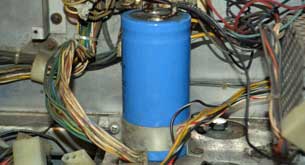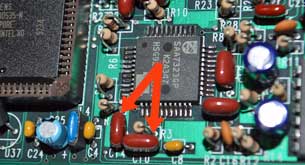Facts about Capacitors
Posted by Admin / in Science Facts

Various sizes of rolled cylinder-shape capacitors
Using a Capacitor in a Circuit
- A capacitor is a circuit component that is made of two conducting surfaces (plates) separated by a dielectric (non-conducting insulator) material.
- The Leyden jar was the first capacitor invented. The Leyden jar was invented in 1745 by Pieter van Musschenbroek.
- Capacitor shapes are either flat or rolled (cylinder).
- The conducting surfaces are made of different materials including a thin film of conductive metal or aluminum.
- Dielectric materials used in a capacitor include ceramic, air, vacuum, paper impregnated with oil or wax, mylar, polystyrene, mica and glass. Each of these materials has a different relative dielectric constant, which is one part of capacitor that determines how much charge the capacitor can store.
- Capacitors with higher capacitance values are made from materials with a higher dielectric constant.
- A capacitor has a unique function in a circuit. It can absorb energy from a circuit and store it temporarily. The capacitor can then later return the energy to the circuit.
- When a capacitor is connected power source, positive charges transfer to one of the conducting surfaces and negative charges are transferred to the other conducting surface.
- The negatively charged plated is known as the cathode and the positively charged plate is known as the anode.
- Capacitors generally discharge very slowly. Many capacitors can store a charge for years. That is why is is very important to treat all capacitors as if they are holding a full charge.
- Discharging a capacitor is dangerous. Handling a charged capacitor in the wrong way can result in burns or even death, if the capacitor is large.
- A capacitor is discharged slowly when a resistor is connected to each leg of the capacitor. The resistor must be rated for the the same or higher voltage than the capacitor can store for this method of discharge to work safely..
- Capacitors are measured in a unit called farads, named after the scientists Michael Faraday. This measure is known as capacitance.
- Supercapacitors made with a material called graphene as the conducting plates, are capable of storing a charge similar to lithium ion batteries. Graphene is one of the most conductive materials known.

The large blue capacitor in the photo is an electrolytic capacitor used in an older pinball machine. This capacitor is capable of storing a dangerous amount of electric charge.

The red arrows point to several of the ceramic disc capacitors on this circuit board
